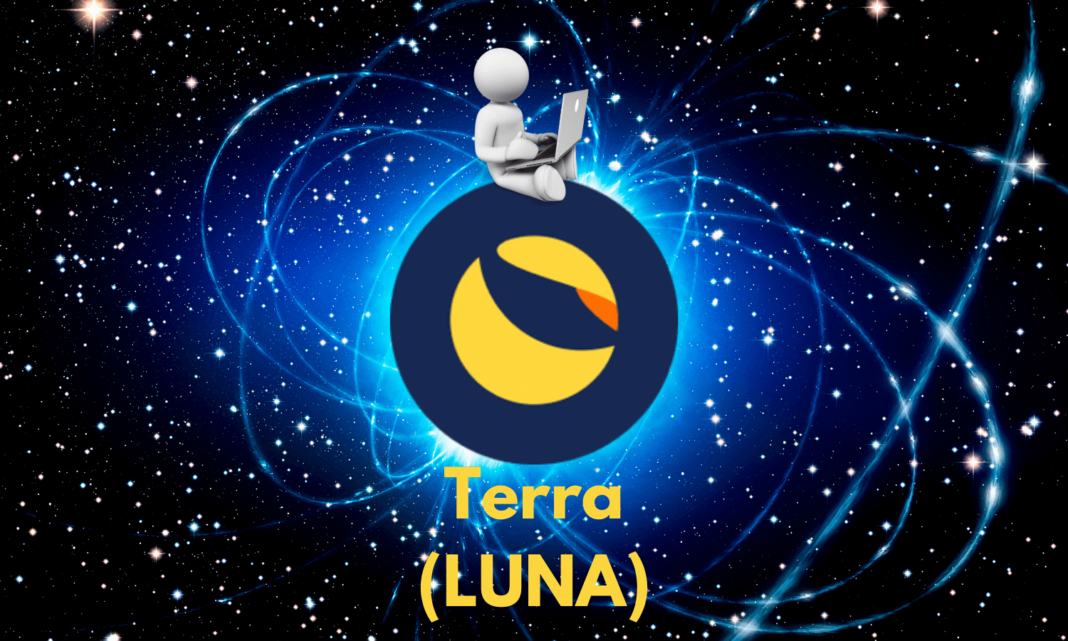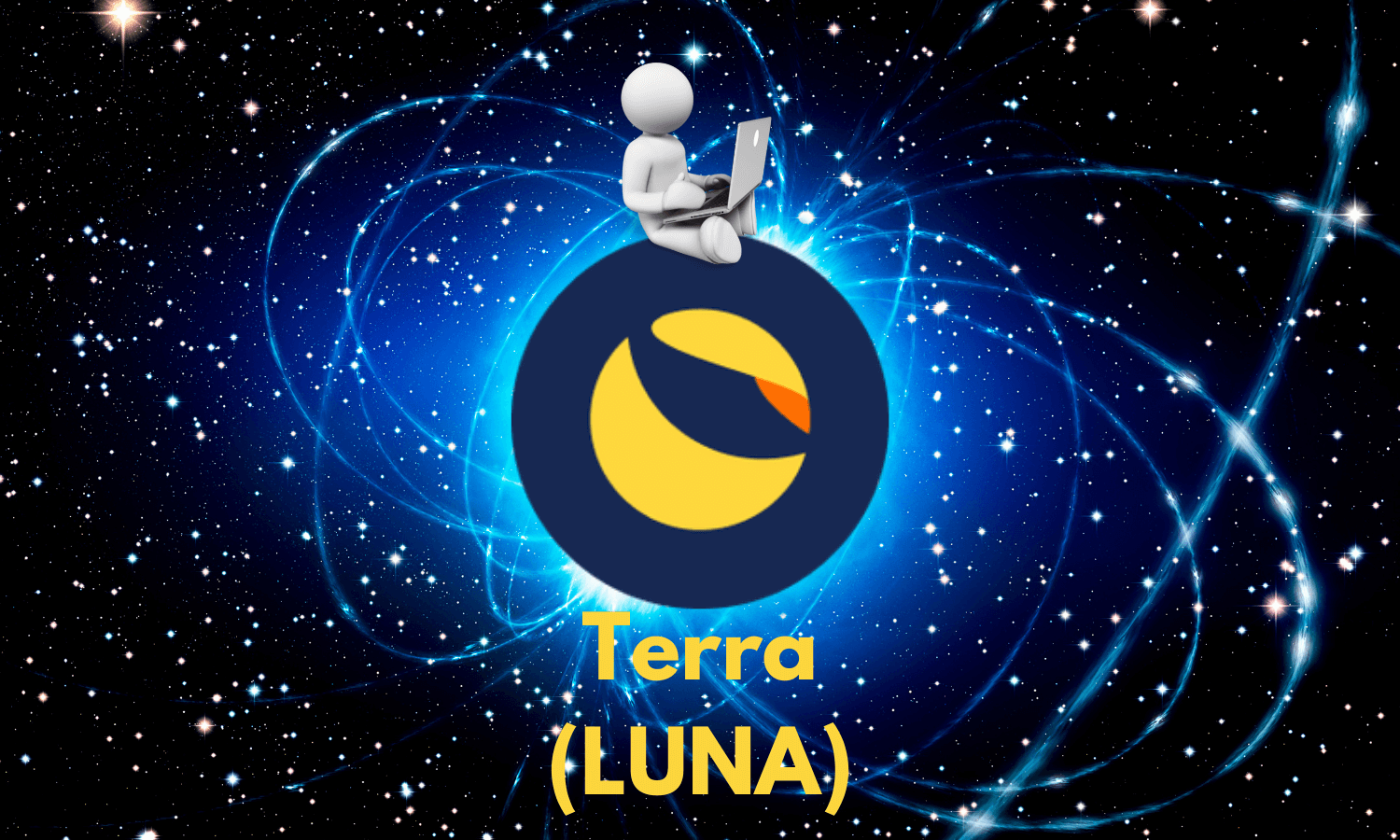Terra: What is it?
Terra (LUNA) is the blockchain platform used to power cryptocurrency and financial apps at Terraform Labs. A cryptocurrency that is pegged to the U.S. dollar through an algorithm is the Terra U.S. Dollar or UST.
Unlike Bitcoin and other cryptocurrencies, Terra aims to reduce volatility. As opposed to an algorithm and reserve token, some stablecoins, like Tether, are indexed to more conventional currencies, such as the U.S. dollar, through cash or cash equivalents.
When UST tokens are minted, a percentage of another digital token and reserve asset, Luna, is “burned.” This helps supply UST with more tokens, but it also creates a community pool. It should help stabilize the price somewhat when the balancing act is performed.
The Luna economy benefits directly from Terra’s economic growth, but lags behind the contraction of the Terra coin, Terraform Labs CEO Do Kwon explained.
In the same way as a credit card transaction, when someone uses UST to buy something, such as ice cream, a fee is applied. Fees are then distributed to holders of Luna tokens, much like a dividend on stocks.
Founders:
Daniel Shin and Do Kwon, the founders of Terra, founded the company in January 2018. Through a focus on price stability and usability, the two began creating the project in the hopes of driving the rapid adoption of blockchain technology and cryptocurrency. The company behind Terraform, Terraform Labs, took on Kwan as CEO.
Ticket Monster, also known as TMON, a popular e-commerce platform in South Korea, was founded and headed by Shin before the development of Terra. The company later went on to help entrepreneurs create fully functional businesses through Fast Track Asia.
Before founding Anyfi, Kwon served as president and CEO for a startup that offered decentralized wireless mesh networking solutions. In addition, he worked at Microsoft and Apple as a software engineer.
The Terraform Labs:
Several stablecoins, like Terra, are being looked at as investment vehicles as cryptocurrencies such as Bitcoin, Ether, and Dogecoin have fluctuated in value.
The Terra cryptocurrency project, whose management company Terraform Labs oversees, has benefited from the cryptocurrency’s popularity. An investor who has pledged $150 million to help it incubate various cryptocurrency projects that are connected to Terra includes Arrington Capital, Lightspeed Venture Partners, and Pantera Capital.
In partnership with Terraform Labs, the firm has built apps that derive from its blockchain technology and track crypto-related financial transactions throughout the firm’s life.
How Does Terra (LUNA) Work?
In its domain, Terra is a decentralized digital financial corporation, a kind of central bank in the form of blockchain. In addition to earning interest on digital assets, customers can spend them using the company’s payment system, or even exchange them for stock. Many of the company’s accomplishments are fueled by Terra (LUNA), its token.
Stablecoins are available through Terra’s platform, which allows for instantaneous settlement. Terra uses a monetary supply maintenance algorithm to maintain the value of an asset by proactively changing its monetary supply. With this mechanism, Terra can provide their customers with cheaper fees and more stable exchanges across borders.
What Makes Terra Unique?
It claims it combines the benefit of borderless cryptocurrencies with the price stability of fiat currencies by using fiat-pegged stablecoins. By automatically adjusting the supply of stablecoins in response to demand, an algorithm maintains the peg. To provide a stablecoin supply to match demand, LUNA holders are incented to exchange LUNA for stablecoins at profitable exchange rates when needed, depending on demand.
With a focus on expanding its business in the Asia-Pacific region, Terra has partnered with some payment platforms. Terra and Chai, a mobile payments application based in South Korea, announced a partnership in July, in which Terra will process purchases processed using Chai on e-commerce platforms via blockchain technology. In most cases, merchants pay 2%–3% of each transaction as a fee.
Furthermore, Terra is backed by the Terra Alliance, which advocates for Terra’s adoption among businesses and platforms. The company announced in February 2019 that it had formed an alliance with e-commerce platforms from ten different countries representing 45 million users and a $25 billion gross merchandise value.
Terra Gas
Terra, like Ethereum, uses gas as a medium for the execution of smart contracts. By using this method, spam is removed from blockchains and miners are further enticing to perform these operations.
The gas price validation process determines minimum gas prices, and transactions with implied gas costs below these levels are invalidated. After each block, computation fees are allocated as a percentage of stake to collaborating validators.
Advantages:
In decentralized digital economies, Terra (LUNA) can be a great solution as it does not require permission from anyone. With Terra, decentralized applications (DApps) and stablecoin development can be made easier and payments can be made with low transaction costs.
Terraform Labs in using Terra’s blockchain:
It plans to create an independent digital financial system accessible to all, including one tied to the Korean won with Terra’s blockchain. Terra’s blockchain will also have associated cryptocurrencies. In Korea, its primary source of growth has been its Chai payment app, which has been used by people to buy coffee at stores throughout the country using Terra’s blockchain. China and Thailand are experiencing growth with the Mirror trading app associated with the company.
Additionally, Terraform Labs is using its latest $150 million funding to build financial apps using Terra’s blockchain, said Kwon. In comparison to Y Combinator demo days, he compared the scouting and investing in other groups to the startup pitch events organized by the early-stage investor Y Combinator.
Terraform Labs is in the process of “creating almost a kind of bank” with all these Terra-specific finance apps, according to Ryan Watkins, a senior analyst at cryptocurrency consultancy Messari.
Terraform Labs also has projects besides cryptocurrency, such as Anchor, an account for holders of Terraform Labs’ cryptocurrencies that pays high interest. Moreover, individuals can create “tokenized” representations of corporate stocks by using the firm’s Mirror app. Kwon explains that synthetic assets could be helpful to small traders in Thailand who will otherwise be hard-pressed to buy stocks and “get some exposure to the upside,” by purchasing these synthetic assets. However, some critics claim the SEC may eventually impose regulations on synthetic stocks, which are presently unregulated.



